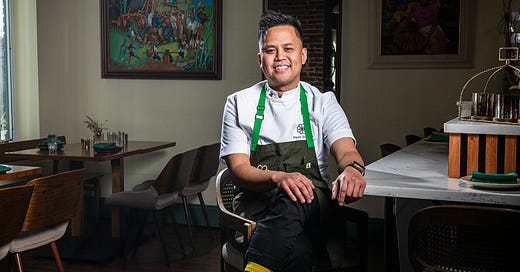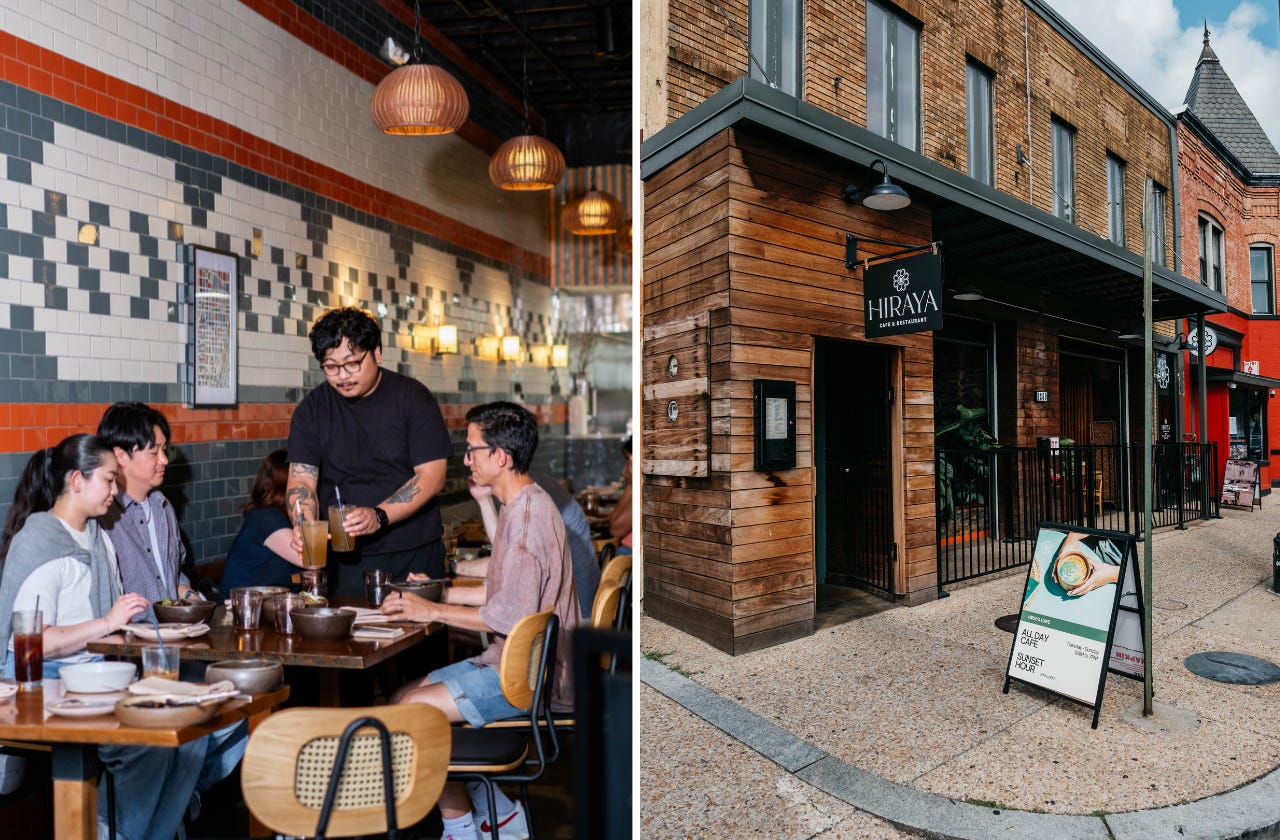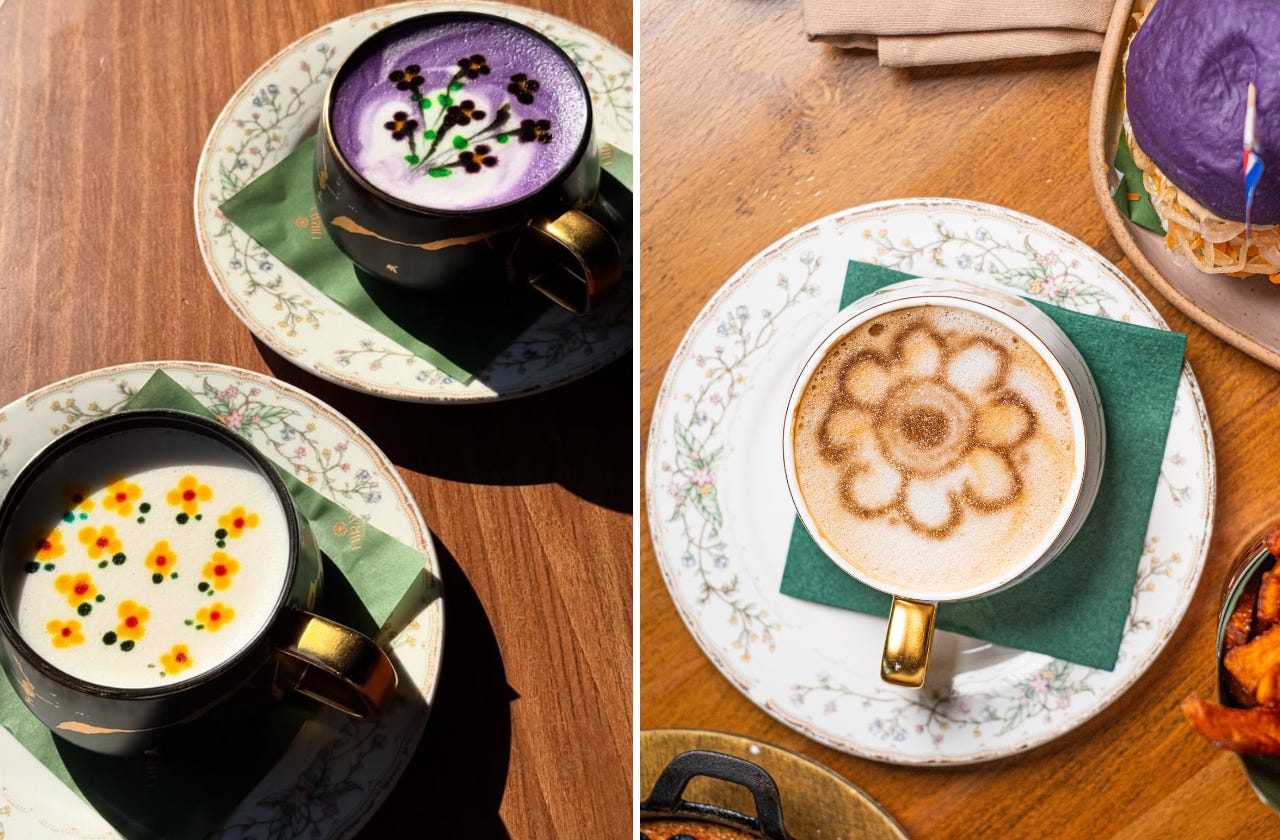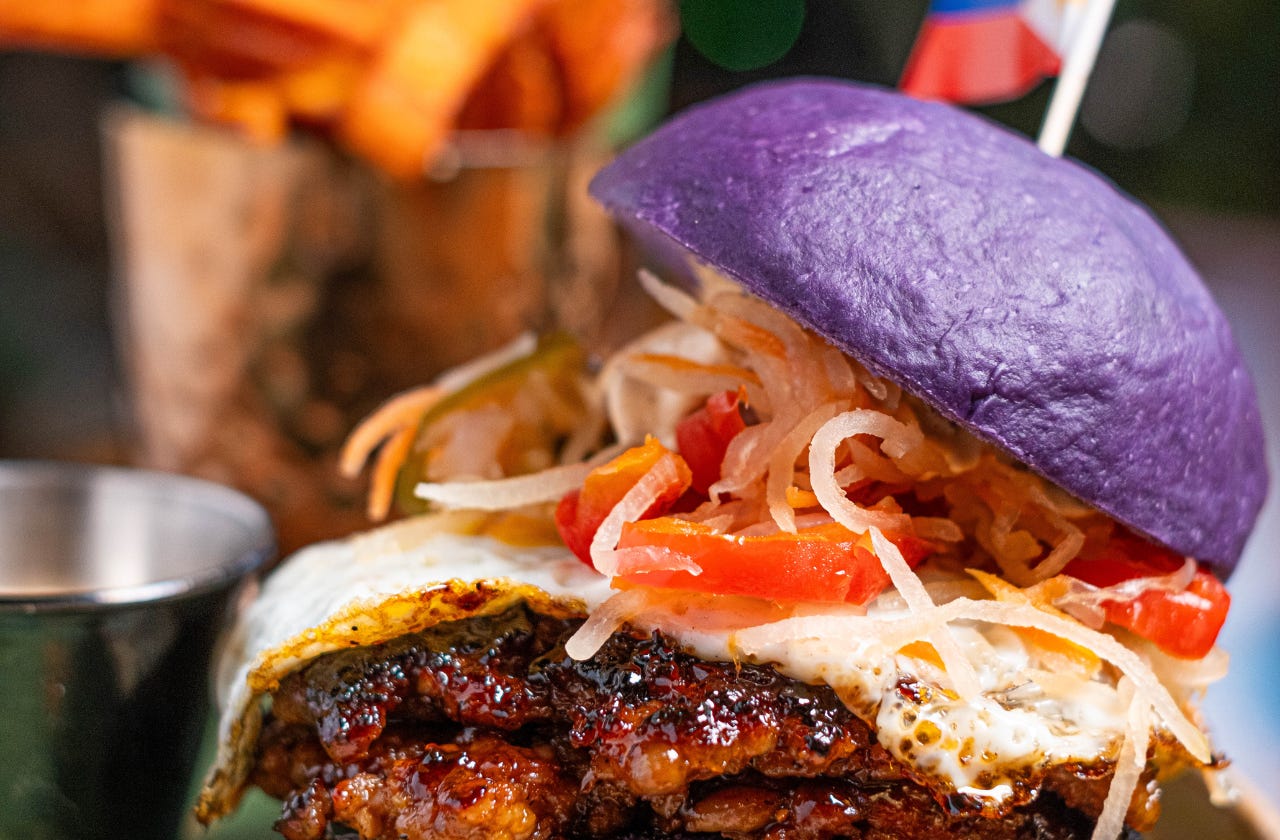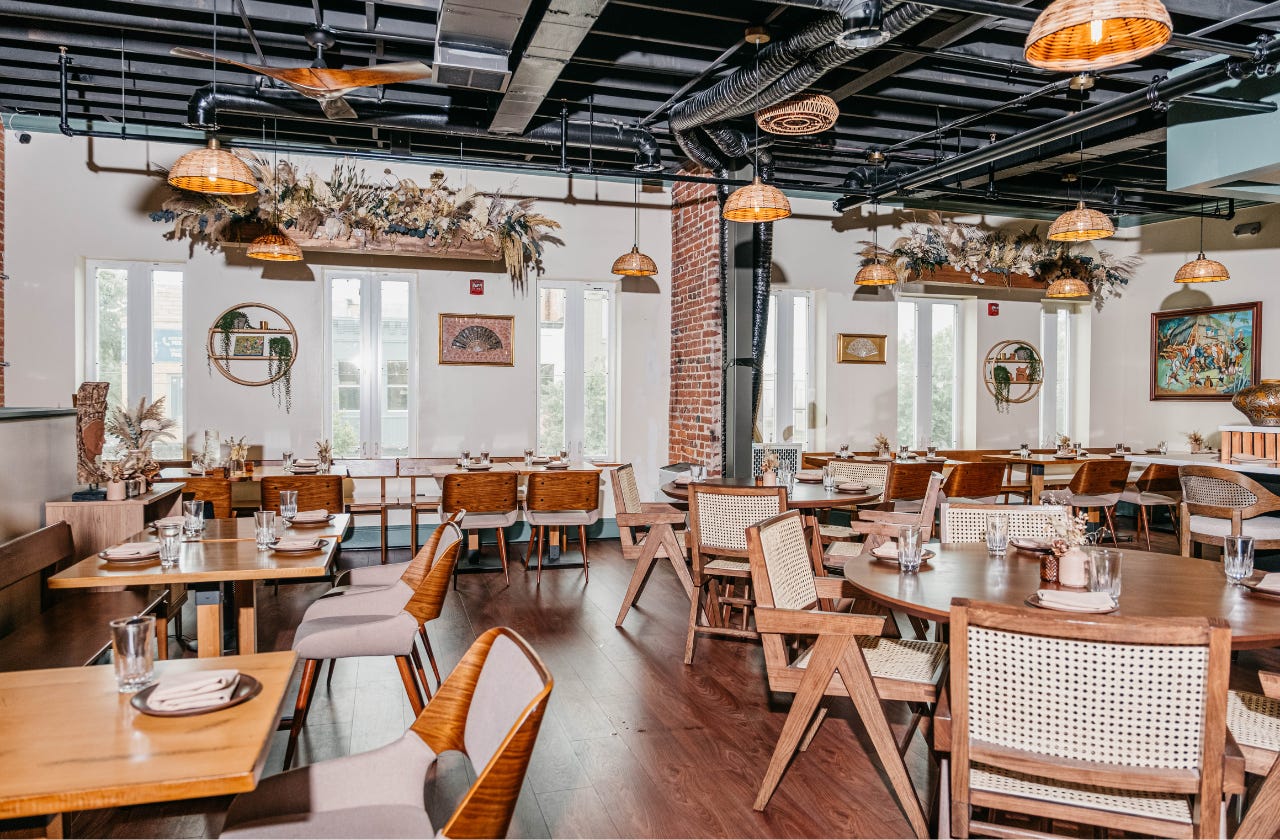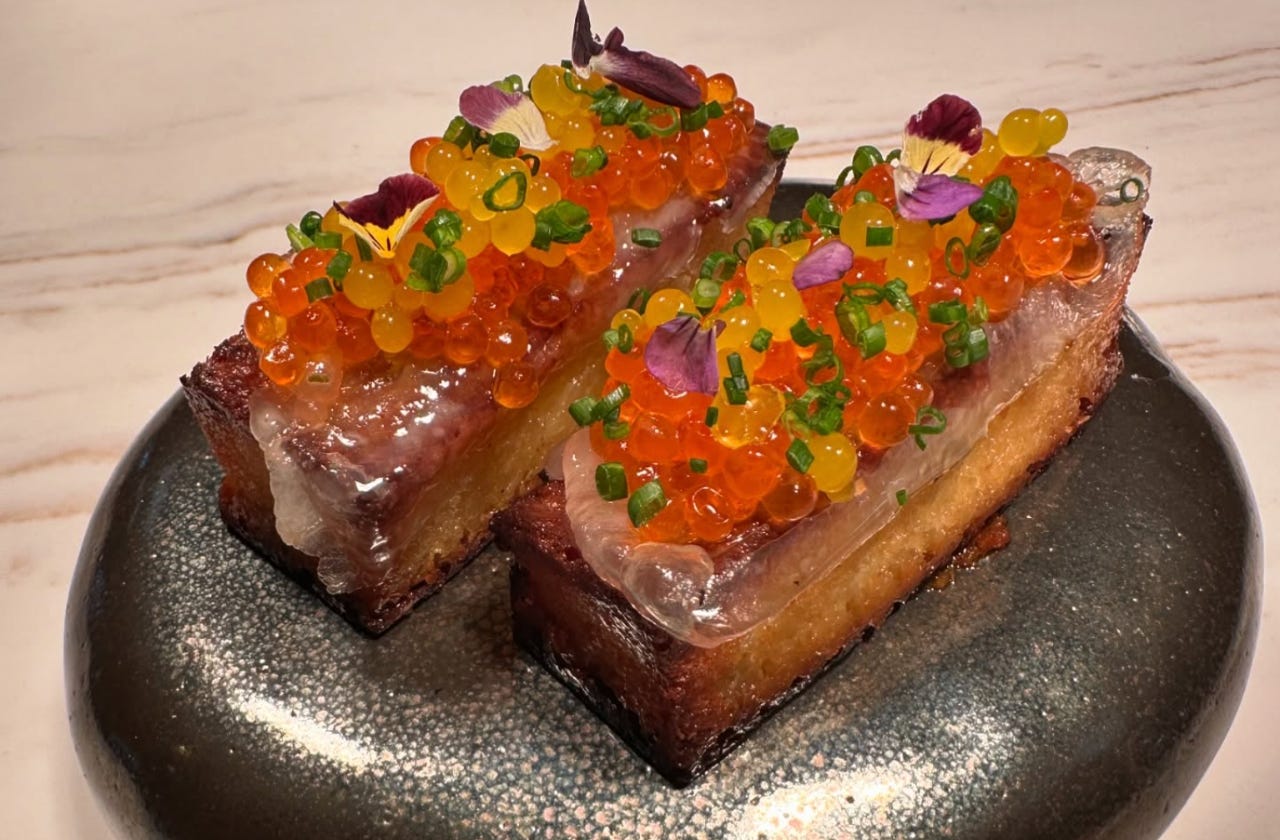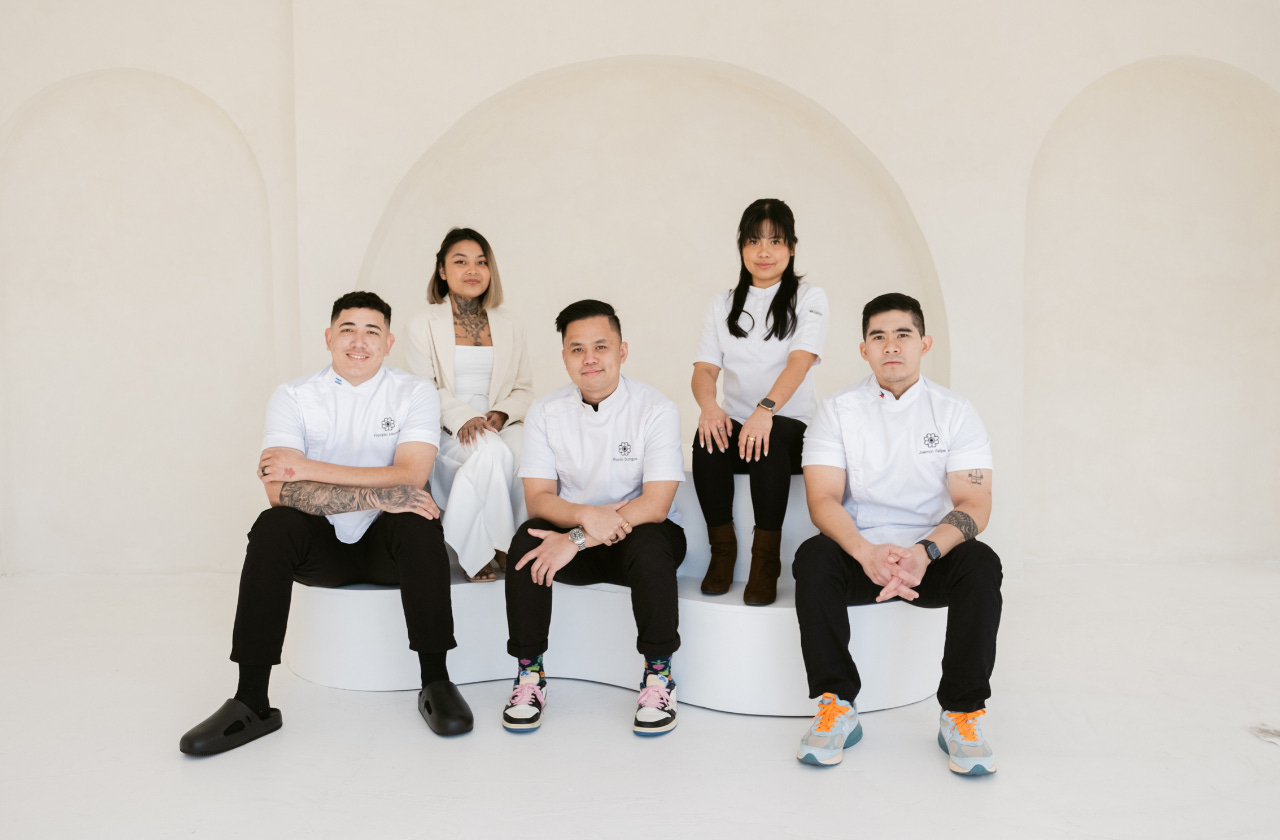Chef Paolo Dungca: Blending Heart, Heritage, and a James Beard Nod
How a Filipino chef is reimagining tradition and earning national recognition along the way.
There is an emerging culinary force in Washington, D.C. and its name is Paolo Dungca – a 2025 James Beard semifinalist for the Emerging Chef category, proudly representing both the District and the Philippines. Paolo, the main chef, together with his two partners, is quickly reshaping how Filipino food is experienced and understood through two distinct yet integrated dining spaces: Hiraya and Kayu.
Hiraya is a Tagalog word that means the fruit of one’s hopes, dreams and aspirations. Kayu is derived from kayumanggi, a Filipino word that refers to the radiant, sun-kissed brown skin tone often celebrated as a symbol of the Filipino people’s natural beauty and identity.
I first met Paolo in 2003 while I was visiting Los Angeles. He and his mom, a family friend, just migrated from the Philippines. I remember a quiet but curious 13-year-old adapting to a new world. At the time, neither of us could have predicted his remarkable journey toward culinary excellence, or the way his passion for food would one day take center stage in his life.
Hiraya: The Flagship and the Community Hub
Housed in a two-story building, Hiraya occupies the first floor as a vibrant café and restaurant. “Hiraya is the more popular one – it’s our flagship, it gets a lot of recognition. Hiraya is the one driving us,” Paolo says.
It is a space that invites you to linger. With seating for 50–60 guests, Hiraya was designed post-pandemic as a haven for remote workers and creatives looking for a change of pace. “It’s a seat-in community space. If you’re getting tired of working from home, you can come to Hiraya and you can work from there where it feels like you’re still at home but in a different setting”, Paolo adds.
Hiraya features Filipino coffee sourced from the Philippines’ Cordillera Region in the form of Sun and Stars Coffee, produced by Kimberly Lazardo, a close friend based in Maryland.
“Growing up, we drank coffee but that was in a 3-in-1 packet, in a powder form”, Paolo says. “We thought it would be nice to bring Filipino coffee and introduce to the city. The flavor inspiration is different as well – something that you’d never had like ube, pandan, turon, champorado. I think these flavors give a point of reference to nostalgia. If you’re in America – it connects you back home.”
When asked about Hiraya’s top dishes, Paolo doesn’t hesitate. The standout is the Ube Chori Burger - a vibrant purple ube bun stacked with double pork chorizo patties and achara, served with kamote (sweet potato) fries. “It’s basically a Filipino burger at its core,” he notes. The dish was so popular that it landed on the cover of Food & Wine Magazine.
Breakfast at Hiraya is a love letter to classic Filipino mornings, featuring tocino, tapa, and longganisa. “We want to introduce these to Washington, D.C. and to show them the stuff that we grew up eating”, adds Paolo.
Kayu: A Progressive Culinary Playground
Upstairs, Kayu offers a different experience - more intimate, dynamic and experimental. “I don’t really want to call ourselves fine dining,” Paolo explains. “It puts us in a very small box that we’re over-priced, this and that, fancy. I think we’re a restaurant that is progressive in the sense that it challenges your perception of what Filipino food could be,” he adds.
Not a fan of labels, Paolo prefers to let the food speak for itself. He values the freedom and creative flexibility to cook: “I like being able to do whatever I want, whenever I want to, without any constraints.”
With seating for 45–50 diners and a kitchen in full view, the vibe is akin to dining in someone’s home. Here, Paolo and his team plays with bold reinterpretations. The menu reflects his risk-taking spirit. One standout bite: cassava cake with smoked trout roe and aligue (crab fat) - a savory spin on a beloved dessert inspired by his Tita Zen’s traditional cassava cake.
The idea came one day as he was eating his Tita’s cassava cake - he thought of using it as a vessel for something savory. When he visited his native Pampanga in the Philippines in 2019, he was introduced to aligue for the first time, sparking a creative fusion. “I thought that was such a nice condiment and it would be fun to add to something sweet and neutral, which was cassava. When I got back to the US, I started playing around with it and we just loved the texture and flavor combinations of it that when we opened Kayu, we added it in the menu and it’s been there since day one,” Paolo recalls.
As for the popular main dishes, Paolo says Kare-Kare is one of his favorites. This one is not your traditional one though. “Instead of pork, we used dry-aged steak,” Paolo points out. The dish is finished with a rich roasted peanut sauce and a touch of Szechuan pili nut for added depth. Another stand out is the Pato Tim – a clever twist on the traditional Pata Tim but instead of using pork, it’s reimagined using duck as the meat.
These two standout dishes are powerful examples of Paolo’s approach of challenging expectations while celebrating reinvention - proof of how far Filipino food can go when given room to evolve.
In addition, Kayu also offers a multi-course tasting menu experience, designed to showcase the depth and versatility of Filipino cuisine in a contemporary, elevated setting.
Challenging Filipino Food Norms
The clientele at Hiraya and Kayu is diverse, and for good reason. Paolo acknowledges the challenge of serving Filipino food to Filipinos themselves because they can be the toughest critics. “It’s always like: this isn’t how my mom cooked it, or this isn’t how I grew up eating it, it doesn’t look like how I’m used to,” he says with a chuckle. In addition, there’s this mindset that Filipino food should be inexpensive – a perception that Paolo wants to change because he believes that Filipino food is one of the best in the world that it can stand beside Italian, Japanese, or French cuisine.
He acknowledges that some Filipinos would be hesitant to spend on Filipino food, noting, “Some would think ‘I could cook this at home so why would I pay $22 for sisig?’. I guess the old traditionalist won’t see the value in what we’re trying to accomplish. For us it’s always about educating the people.”
A Mission Bigger Than the Plate
Though Hiraya and Kayu differ in tone, they are united by a mission: to elevate Filipino cuisine while honoring its roots.
Paolo isn’t just cooking food - he’s building bridges. For him, it’s never about the awards, fame, or money – its deeper than that. “I think we’re very fortunate to do what we do on a daily basis because we get to connect with people every day and we get to be a part of their lives, forever, in a sense. That’s what’s really special for me. It’s more of like a connection that we get to build on a daily basis and we get to be a part of something,” he says. “It’s not just about what we serve. I think the biggest thing that we want to achieve is how do we connect with people for the rest of their lifetime,” he adds.
Despite their growing recognition, including the recent James Beard semifinalist nod, Paolo remains grounded. He doesn’t want to see it as being about him but more about the community, the team, and everyone doing amazing things to represent the Filipino culture.
While there are other Filipino restaurants in D.C., - many of them close friends - Paolo believes each has its own lane and doesn’t like the thought of pitting one against another.
“Each and every one of us is very unique and that there’s always room for us to co-exist. I think we tend to compare ourselves to other Filipino restaurants when they’re two different things,” he explains while adding: “I think we’re all doing amazing things representing something we’re really proud of. A rising tide lifts all boats…if we’re hot right now because of all the accolades we’re getting, we’re bringing everyone with us…I’m representing something that’s bigger than me at this point. It’s never just about Paolo - it was always about our community and the team that we’ve built.”
Culture, Identity, and the Courage to Leap
Paolo’s path wasn’t linear. Originally enrolled as a nursing student, he switched gears and enrolled at the Art Institute of Orange County to pursue his passion for cooking. “We were never told to be entrepreneurs,” he says. Realizing the inherent risk of going into business, he reflects, “If you fall and fail at least you know. Just because you fail doesn’t mean there’s no lesson to be learned. There’s always something good that comes up with the bad.”
That leap of faith has paid off.
Today, Paolo isn’t just an accomplished chef - he’s a storyteller, a cultural ambassador, and a community builder. Though his recent recognitions have put him in the national spotlight, he remains grounded in the values that shaped him: humility, hospitality, and heritage.
As someone who met him back when he was just a teenager navigating a new life in America, watching his rise has been incredibly moving and something to be proud of. He’s not only fulfilled the dream of many immigrants - he’s brought an entire community with him.
Looking Ahead
Paolo and his team are building more than a restaurant group, they're shaping a movement. They’re telling stories through food. They’re creating lifelong memories. And they’re proud to represent the Philippines every step of the way.
“For us, we love what we do and we love showcasing food the way we want to interpret it. And it’s very exciting,” Paolo remarks in closing.
So, if you find yourself in Washington D.C., make time to visit Hiraya for a soulful, welcoming meal, or treat yourself to an unforgettable dining experience at Kayu. In both, you’ll taste more than just food. You’ll taste memory, ambition, and the promise of a cuisine finally fulfilling its full potential.
You can check out Hiraya and Kayu at their website: www.hirayadc.com.
You can follow Chef Paolo via Instagram at paolodungca.


